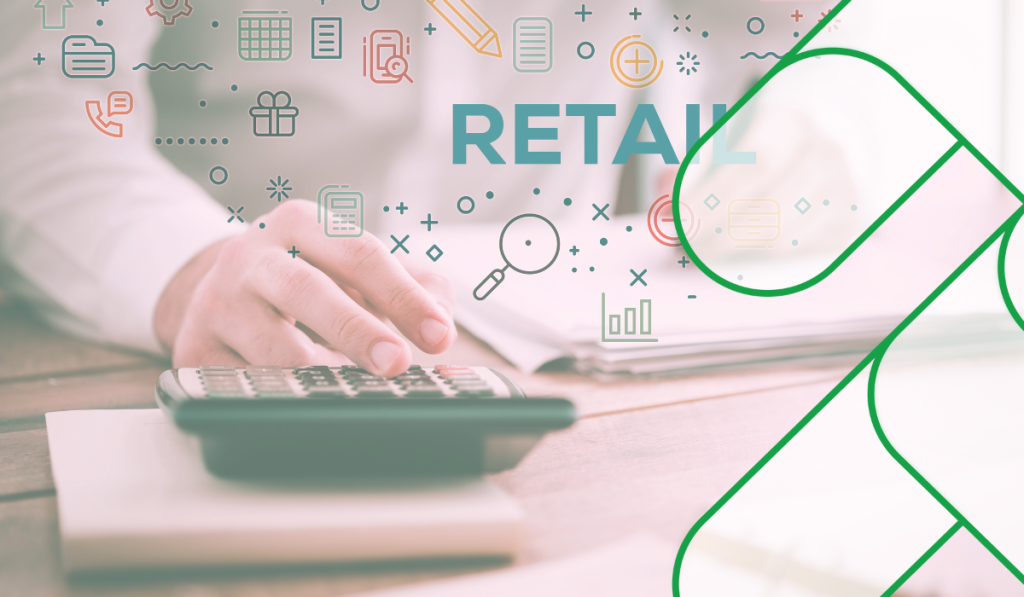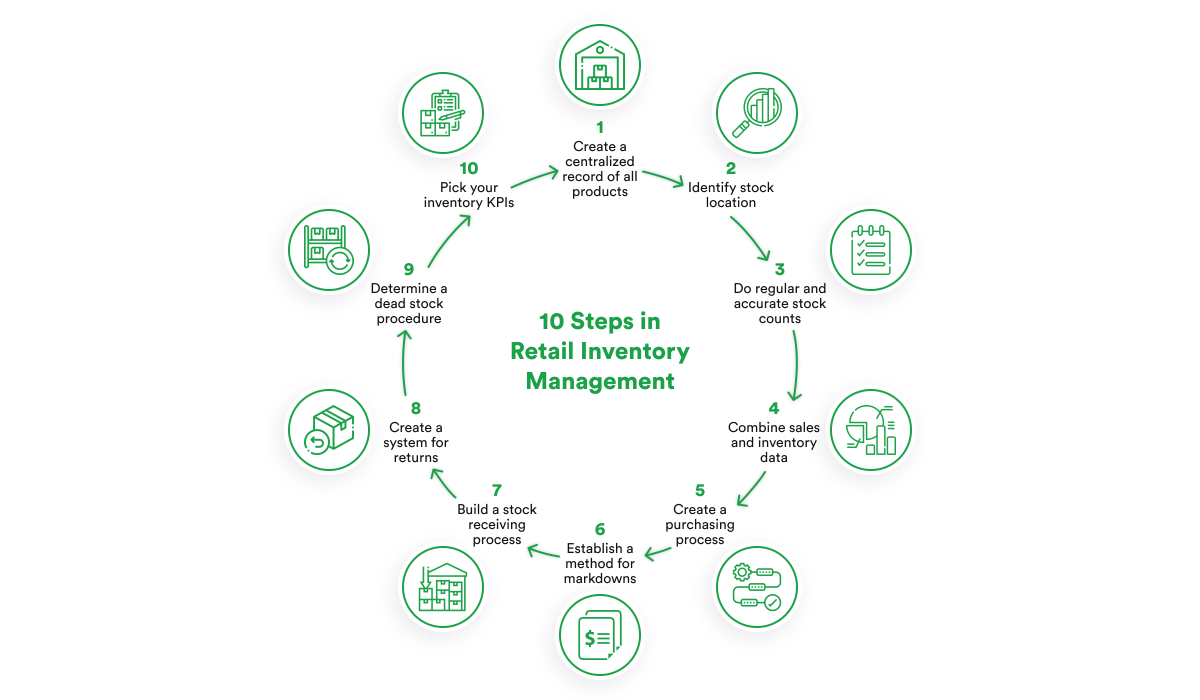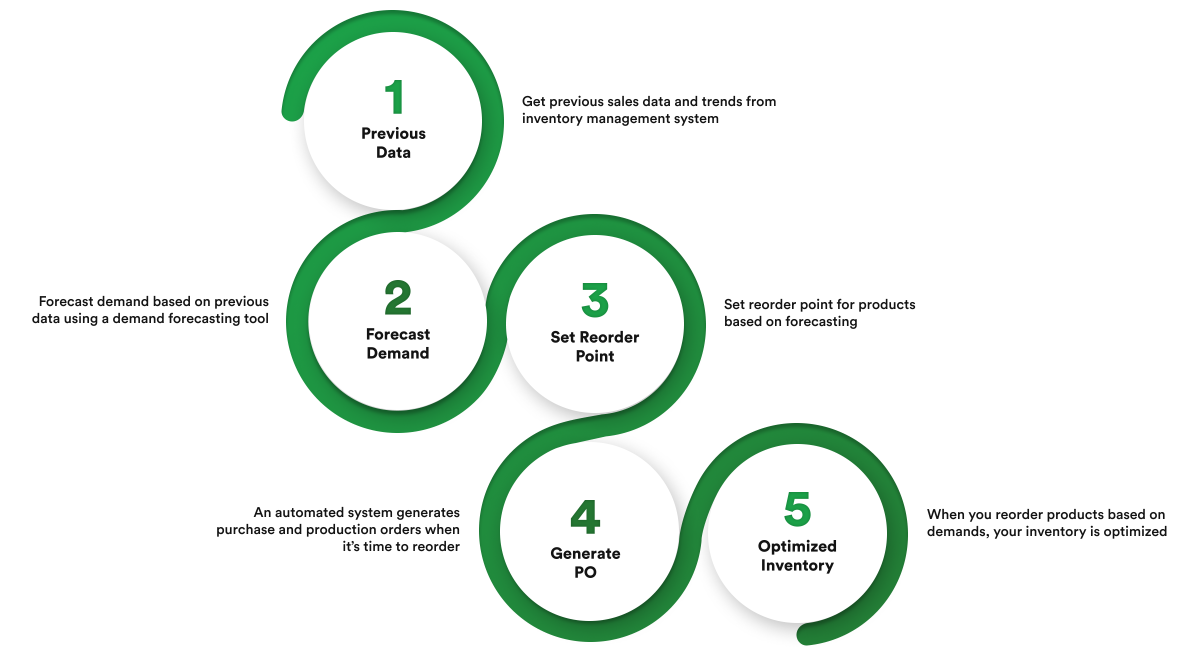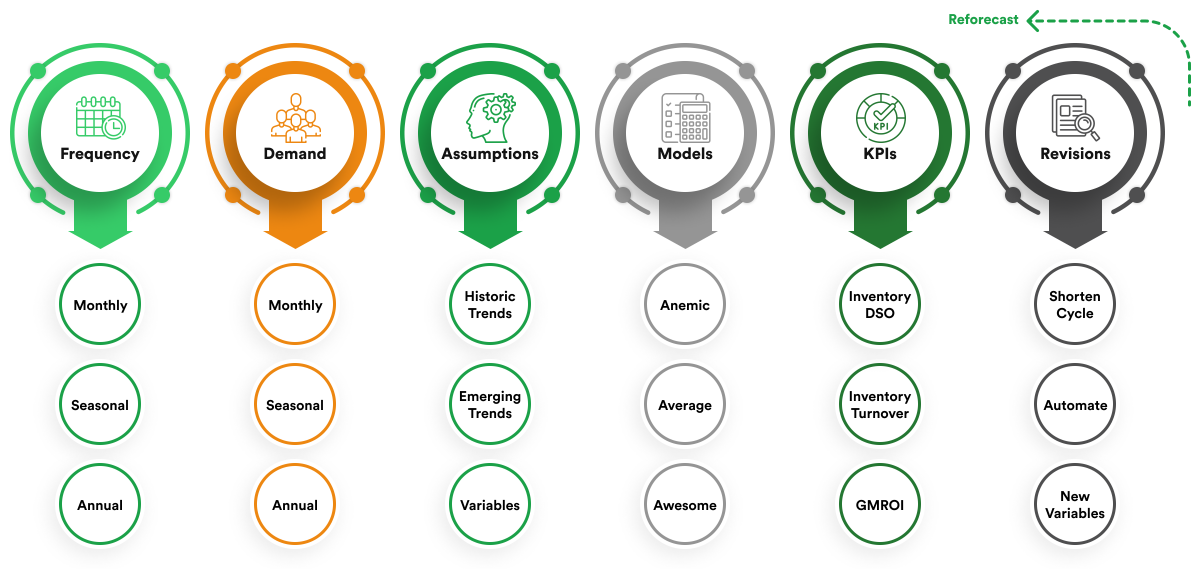
Omnichannel Retail: Technologies, Challenges, and Opportunities
This article explores omnichannel retail. It covers its advantages, the technology driving it, the implementation challenges companies face, and future trends.
Why should businesses know about demand forecasting in retail, and why is it important to understand how to manage inventory in a retail store? According to Gartner, 57% of retail enterprises will increase investments in software in 2024. Retail demand forecasting and inventory management technology will likely be a healthy fraction of those investments. Gartner also revealed that almost half of surveyed retail businesses regretted a software purchase in the last eighteen months. This suggests that while various retail demand forecasting software and retail inventory management software are essential, businesses might not be selecting the right solutions.
Commissioning the wrong demand forecasting or retail inventory management solutions can have significant implications on a business. It can potentially affect productivity, drain resources, and result in the narrowing or loss of a competitive advantage. The best way to strengthen demand forecasting in retail and choose the most effective inventory management technology is by knowing key trends and challenges in the industry.
Before we delve into these new technologies, trends, and challenges, let us revisit some basics about retail demand forecasting and inventory management solutions.
For retail businesses, the biggest nightmare is to get stuck in understock or overstock situations. Understock situations can result in reputational damage, fewer business opportunities in the future, and strained relationships with existing customers. Overstock situations can be incredibly expensive and have long-lasting financial implications. With inventory, retail businesses need a goldilocks approach – not too little, not too much, but just right.
Demand forecasting involves studying patterns in existing customer behavior as well as diverse external factors to estimate the demands for a product in the future. Retail inventory management comprises numerous processes and strategies to ensure that businesses have the exact number of products needed at a given time. Over the years, businesses have employed various approaches to optimize demand forecasting and retail management. However, modern technology offers enterprises opportunities to automate and evolve their retail inventory management and demand forecasting at a much higher level.
All retail organizations have unique demand forecasting and inventory management requirements. Therefore, many may opt for custom inventory management software. Knowing the trends influencing retail inventory management is essential to choosing the right software and amalgamating the most important capabilities.

Any business wanting to know how to manage inventory in a retail store should acquaint themselves with the following trends.
As consumer expectations and behaviors evolve, businesses need to understand that periodic reviews of their inventory will not suffice. 24/7 visibility and reporting are growing trends because online consumers want to know immediately whether a particular product is available and at which outlet it’s available. Therefore, retail businesses should have continuous and comprehensive views of their warehouse stocks. Failure to adopt continuous inventory visibility mechanisms can result in overstock and understock situations and an exodus of customers.
Many businesses might wonder how to use AI for demand forecasting in retail. The answer is ML. Businesses acquire vast volumes of data from disparate sources, including IoT devices, feedback forms, surveys, online customer behaviors, and external libraries. It’s impossible to gain any valuable insights by analyzing this data manually. Therefore, businesses are increasingly employing ML tools for data analytics. By leveraging AI-based demand forecasting tools to uncover patterns, companies can proactively manage inventory and stay one step ahead of the curve.
The ultimate manifestation of AI-based demand forecasting comes in the form of full-fledged smart warehouses. Smart warehouses use numerous AI, ML, IoT, and edge computing capabilities to automate and optimize retail inventory management. In the next four years, the smart warehouse market will reach a value of $40.5 billion, rising at a compound annual growth rate of 14.6% since 2023. With smart warehouses, businesses streamline and strengthen their inventory management practices and recalibrate their demand forecasting in a smoother, safer, and more sustainable manner. Smart warehouses might seem expensive to set up, but the long-term benefits will likely outweigh initial investments.
Every modern retail organization needs to understand the environmental impact of their operations. While smart warehouses and other AI-based demand forecasting and inventory management technology will naturally help optimize resource utilization and reduce wastage, businesses need to know the intricacies of their eco-friendly initiatives. Sustainability should be a lifelong commitment, especially in retail, not just a one-time initiative to tick boxes. Businesses that choose to commission or co-design custom inventory management software and technologies should bring sustainability to the forefront.
Omnichannel is one of the buzzwords around retail demand forecasting and inventory management, and rightly so. Consumers buy products in many different ways. Some prefer in-store purchases, some schedule their pickups, and others opt for home delivery. Similarly, customers purchase certain products on smartphone apps and others on websites or in person. Retail customers, companies, and supply chains must be able to seamlessly connect and communicate to ensure top-class channel-agnostic service. Omnichannel inventory management involves unifying and automating supply chains, innovating based on customer needs, and ensuring complete visibility across warehouses and stores.
Retail businesses rely on a robust foundation to ensure powerful and precise demand forecasting and inventory management. In the past, that foundation was on-premises data centers. However, numerous retail organizations are now shifting from on-premises infrastructures to cloud-based environments. Optimizing inventory management with on-premises infrastructure can be expensive and time-consuming because of the resources and human resources needed. By leveraging an assortment of infrastructure-as-a-service (IaaS), platform-as-a-service (PaaS), and security-as-a-service (SaaS) products from cloud providers, businesses can transform their inventory management ecosystem into a lightweight and cost-effective model.
Generative AI (or GenAI) has recently been the center of attention. Although it remains a fiercely debated topic, its use case in retail inventory management is becoming common. Businesses can leverage GenAI tools to assess and analyze patterns across internal and external data sources to sharpen demand forecasting in retail contexts. GenAI-based demand forecasting can help enterprises eliminate resource wastage and avoid customer dissatisfaction. Furthermore, marketing and advertising are other key use cases for companies who want to know how to use AI for demand forecasting in retail. While AI can help optimize demand forecasting, its effects are cyclical because it allows businesses to use those forecasts to design and deploy targeted ads to specific demographics within their customer base.
Robots in stores and warehouses are perhaps the most exciting and futuristic of all retail demand forecasting and inventory management trends. ERIS (Effective Retail Intelligent Scanner), an innovation by our robotics partner Adapta, is a microcosm of the capabilities of robotics in retail spaces. The key capabilities of ERIS include price label detection, on-shelf availability, out-of-stock detection, and price label printing. Any business can benefit from retail inventory management solutions like ERIS. However, to successfully do so, companies must be aware of some critical retail demand forecasting and inventory management challenges.
Businesses need to overcome the following hurdles to successfully implement retail inventory management solutions and mitigate any threats in the vicinity.
Retail demand forecasting and inventory management rely on high-quality data and analytics capabilities. The volume and quality of data available to a business isn’t the only key factor. They also need to have the tools to transform that data into actionable insights and the strategy to do so in a logical, cost-effective, and streamlined manner.
A variety of socio-economic and cultural factors may result in dramatic shifts in consumer demands, expectations, and buying behaviors. Modern consumers are also unforgiving, which means that they will not wait for businesses to catch up with their new needs. Rather than remain with familiar vendors, many consumers may disrupt the status quo and opt for other companies that offer quicker or more flexible solutions.
Robust inventory management requires a streamlined and interconnected supply chain. However, the reality is that numerous businesses work with disparate and fragmented supply chains. Fragmented supply chains will affect every aspect of retail demand forecasting and inventory management, making omnichannel efficiency impossible.
Retail inventory management software is the engine behind accurate demand forecasting. However, adopting, advancing, and integrating retail inventory management software with legacy applications, technologies, and systems is difficult. Businesses that choose custom inventory management software should pay heed to potential integration complexities.
The retail industry is one of the most competitive in the world. Every region has retail organizations of varying scales, each boasting unique offerings and customer experiences. This can make it very difficult for a retail business to stand out and be successful. But one thing is for certain: optimizing demand forecasting and inventory management can provide a significant competitive advantage.

As mentioned above, the biggest challenges in retail demand forecasting and inventory management include suboptimal data ecosystems and analytics capabilities, fluctuating consumer demands, fragmented supply chains, software integration complexities, and highly saturated markets filled with competitors. The best way to overcome these complex and ever-present challenges is to avoid off-the-shelf retail demand forecasting and inventory management solutions and opt for custom inventory management software.
By going for custom inventory management software and technologies from a tech partner like rinf.tech, businesses can focus on the capabilities and challenges that matter the most to them. They will be able to intricately configure every aspect of their solution to meet consumer demands, satisfy key stakeholders across the supply chain, increase profit margins, and strengthen bonds with customers.
Custom software solutions can be tailored to each business’s unique operational processes, data structures, and strategic goals. This personalization ensures a better fit compared to generic off-the-shelf products, which often require businesses to adapt their processes to the software, not the other way around. A custom approach also allows for more flexibility in integrating with existing systems and scaling as the business evolves.
Furthermore, with custom inventory management software, businesses can leverage cutting-edge technologies like AI and ML more effectively. These technologies can be specifically trained and calibrated to the business’s data, leading to more accurate and insightful demand forecasting. This level of customization facilitates a deeper understanding of customer behavior, market trends, and inventory dynamics, enabling businesses to make more informed decisions.
Custom software also offers enhanced security features, as it is developed with the specific needs and risks of the business in mind. This is crucial in an age where data breaches and cybersecurity threats are increasingly common. Custom solutions can be designed with robust security protocols, ensuring that sensitive business and customer data is protected.
Moreover, partnering with bespoke retail technology providers allows businesses to stay at the forefront of technological advancements. These partnerships provide access to expert knowledge, ongoing support, and continuous updates, ensuring that the inventory management system remains effective and efficient over time.

Retail is amongst the most exciting industries in the world. It’s also one of the most competitive. To stay ahead of competitors and maintain a strong reputation in the sector, it’s vital to optimize demand forecasting and inventory management. Businesses must be aware of key trends in this space, including the rising need for 24/7 visibility, ML-driven analytics, smart warehouses, sustainability initiatives, omnichannel approaches, cloud adoption, GenAI tools, and robots in stores and warehouses.
Like any other technology use case, the journey to optimizing retail demand forecasting and inventory management is complex. However, you can sidestep these challenges by leveraging our retail inventory management solutions. Furthermore, our custom inventory management software innovations can help you future-proof and confidently scale in a dynamic and ever-evolving retail landscape

This article explores omnichannel retail. It covers its advantages, the technology driving it, the implementation challenges companies face, and future trends.

A comprehensive overview of how fintech innovations drive significant changes in the retail industry.

In this article, we explore a current retail technology landscape and trends shaping the industry, retail tech use cases, as well as what the future holds for retail tech.
Copyright © 2023 rinf.tech. All Rights Reserved.
Terms & Conditions. Cookie Policy. Privacy Policy.
Politica Avertizari de Integritate (RO)